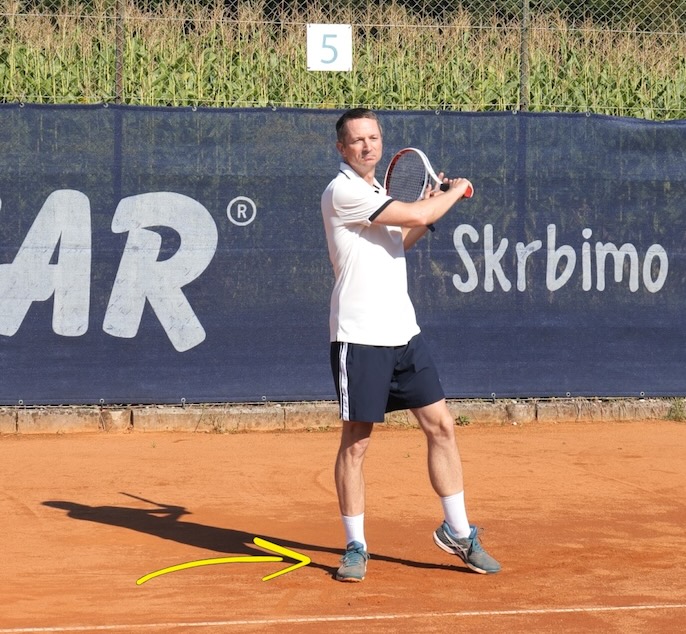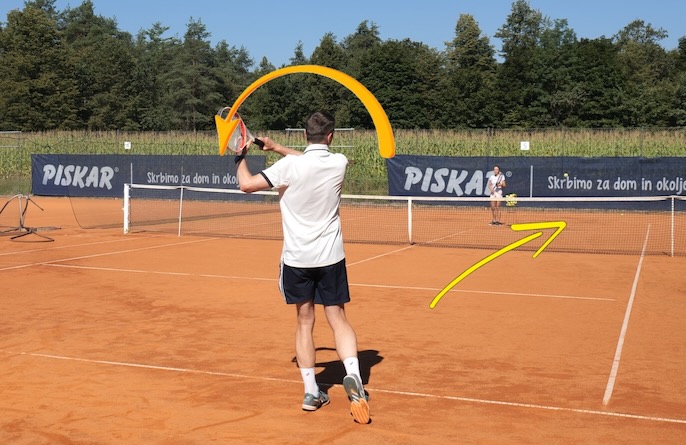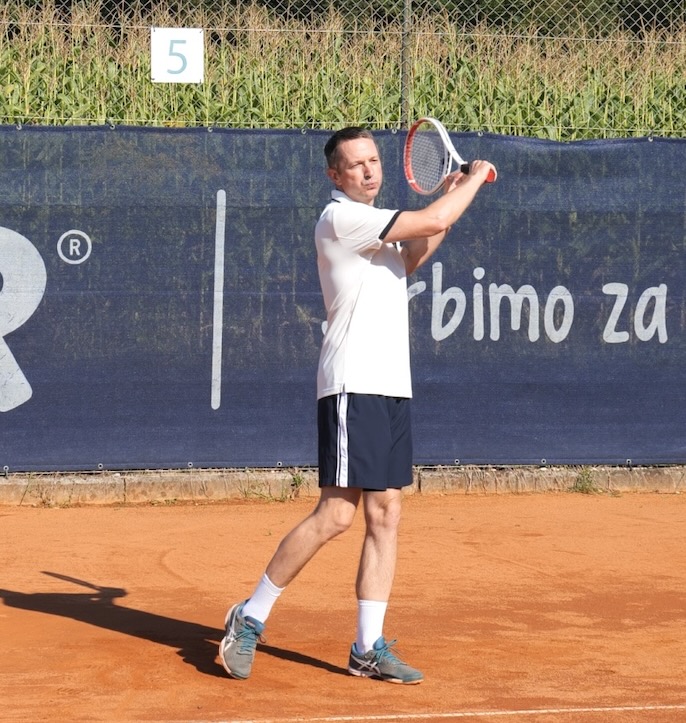When you start playing tennis competitively and your opponents move you around the court with balls at different heights, speeds, and spins, tennis can feel like a very chaotic game. I am using the word “chaotic” because it means the opposite of order and pattern.
While it’s true that every single incoming ball that you receive in tennis is different, there are still common patterns that occur often, such as moving to a deep cross-court shot by your opponent and playing it back cross court.
But what happens to you is that this chaos pulls you in: you subconsciously follow it and mentally you feel completely stressed, in a state of anxiety, and unable to focus.
Your movements and stroke execution will be erratic and not fluid, your ball tracking ability will be hindered, you will not be able to read what your opponent is tactically doing to hurt you, and therefore you won’t be able to plan smart, tactical responses.
You will constantly be in a reactive state, feeling that there is no time to settle down for a shot and plan your next shot. That is why it is essential to calm down when playing tennis – you have to find peace in the chaos!Tip #1 – Holding Your Balance until the Ball Bounces
The following ways of helping you calm down in tennis should be practiced by progressing from basket feeding or using a ball machine to free hitting sessions with your partner and eventually applying them in point play.
The first way to calm down is to practice holding your balance after you’ve hit the ball. Hold your balance until your ball has bounced on the other side of the court and then recover.

Holding balance after hitting not only calms you down but keeps improving your balance ability.
You will of course at first receive nice balls so that you can execute a groundstroke very comfortably, using one of the three most common weight-transfer/balance patterns.
If you hit a neutral stance forehand, then hold your balance on your left leg (for right-handers) while dragging the back foot on the ground and eventually resting it on the tip of your shoe.
In open-stance forehands you have two options:
• if the ball comes more at you or you move to the left, then you will start with your weight on the right leg, but you will transfer it to the left as you hit the forehand. So you will end up again on the left leg holding your balance.

If you transfer weight in open stance, you'll end up on left leg (right-handers) so stabilize on it.
• If the ball is further away to the right, you’ll need to move towards it; then immediately transferring your weight to the left is not a good idea, since you’ll pull away too quickly from the ball. In that case, you will stay on the right leg and hold your balance on it.
The same applies to backhands, although both one- and two-handed backhands are mostly played in a neutral or even closed stance.

This type of balance is very tricky to master for recreational tennis players but you need to learn it.
Tip #2 – Slowing Down the Follow-Through
Tennis players tend to execute very quick follow-through actions in matches because they feel rushed all the time.
This mental state of panic and rush then shows itself as very quick arm movements during and after a stroke – that obviously cannot lead to controlled and clean shots.
We can counter that by deliberately slowing down the follow-through, which not only gives us better ball control but also calms down the body movements. And as the body movements calm down, so does the mind.

Slowing down the follow-through also helps "tame" the acceleration and control the power.
Use the same timing as before: slowly perform the follow-through in sync with the ball that’s flying towards the other side and stop only when the ball hits the ground.
When it comes to forehands and two-handed backhands which involve more body rotation compared to a one-handed backhand, keep on slowly turning the body as you follow the outgoing ball with the follow-through.
Tip #3 – Long Exhale until the Ball Bounces
The final way of calming yourself down is through breathing. Your goal is to exhale as long as the ball you’ve just struck flies until it bounces on the other side.

A long exhale not only calms you down but it keeps replenishing your oxygen supply.
The duration of the ball flight is typically between 1 and 1.5 seconds – so that’s how long you should take to breathe out. Breathe out like you’re blowing out a birthday candle.
Putting It All Together
Practice holding your balance, slowing down the follow-through, and executing a long exhale first under easy conditions, ideally by having someone feed you balls from the basket or using a ball machine.
Really try to time all three methods to last as long as it takes the ball you’ve just hit to bounce on the other side; then you can recover and prepare for the next ball.

Use all three ways of calming down on both forehands and backhands...
The next step is to apply all three methods while free-hitting with your partner.
You may need to slightly shorten the duration of all three methods, since the ball will come back earlier than when using a ball machine.
But still pay attention to the ball leaving your racket and end the execution of balance, follow-through, and exhaling just before the ball hits the ground.

Even when I am in a live ball rally, I still have enough time to calm down for a second after the shot.
If you record yourself from the back, you should clearly see a pause or a distinct slowdown of your movements after you’ve hit the ball.
At some point during this practice you will start to feel the real benefits of calming yourself down through balance, follow-through control, and breathing.
You should feel calmer but also notice that you’re hitting the ball cleaner with better control.
That will help you think less and feel more, as you can just focus on the general sensation of calmness and body control as you move around the court.
Finally, you can consciously practice the three ways of calming down in point situations only if you are playing a practice match.
That’s because consciously paying attention to your body movements and breathing will take your focus away from tactical thinking, which means you cannot really make smart decisions in the match.
So practice these techniques consciously only in matches that don’t really matter or focus on these three methods only for a few minutes at the start of a real match so that you can settle down.
Then shift your focus to reading what’s going on in the game and focus on making early and good decisions.

Once you internalize the ways of calming down, they will be present even in match play.
The final goal is to perform all three actions completely subconsciously in match situations. Just be aware that you will of course not be able to hold your balance, follow through, and breathe as long as in practice sessions, since match play is faster and more chaotic.
But if you again record yourself, you should notice a short moment of pause and body control with a long exhale almost every time after you’ve hit the ball.
With a calmer mind and more controlled body movements, you’ll hit the ball much better and be able to make quick and effective decisions that will give you the extra edge needed in a match to prevail.
One final tip: This technique of calming down using the three methods explained above is completely automatic for me and always present when I play tennis with my friends.
Every higher-level tennis player does this, although not many are aware of it; they just developed this over many years of practicing and playing tennis.
So don’t look at this approach as something that you apply here and there but as something that you will implement in your tennis game permanently, since it is the foundation of body and mind control in tennis.


